Byron Cinema - History & Info
Home Page / Hucknall Byron / Art Deco Home / Hucknall Cinemas / Byron Film Listings / 1936 / Souvenir Programme
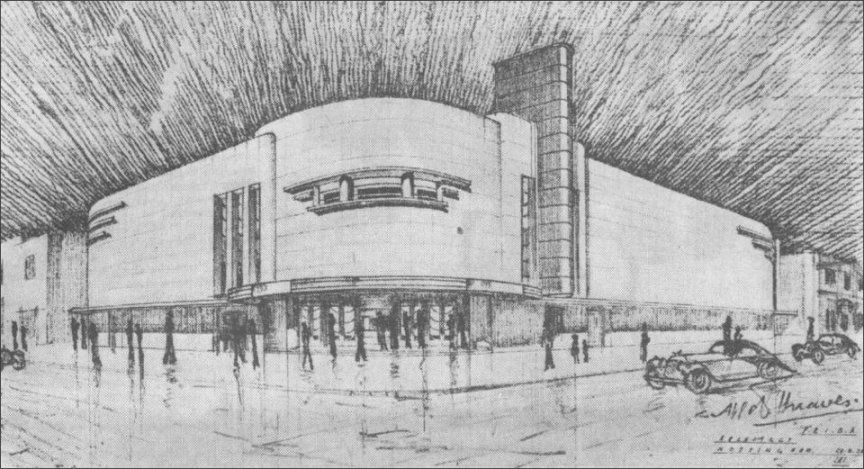
The Architect, Alfred J Thraves, vision of the Byron - this picture even shows his signature on the finished product!
The image is a little sharper when put into a negative and the whimsical cars are fabulous!

THE BYRON CINEMA ARCHITECT
The Byron Cinema – Hucknall (Closed - 1 screen)
Opened as the Byron Cinema on 2nd November 1936 screening Shirley Temple and John Boles in “The Littlest Rebel”. It had a total seating capacity of 1,189 which were located in stalls and circle. The architect was Alfred J. Thraves of Nottingham who designed an Art Deco cinema (in the style of an Odeon Cinema) that had a sweeping curved brick facade, highlighted by a vertical fin tower feature on the right hand side that was faced in cream tera-cotta tiles. The Byron closed as a single screen cinema on 13th October 1967 screening Burt Lancaster in “The Professionals”. The building was then split into two sections, the former stalls area downstairs becoming a bingo club and the former balcony upstairs became a 404 seat cinema, which re-opened on 31st December 1967 with the James Bond movie “You Only Live Twice”. It had a change of name in 2003 when it was re-named Cineplex, but the cinema closed in June 2006. The entire building is now in use as a bingo club.
King’s Theatre – Sutton – in Ashfield (Demolished – 1 screen – 1259 seats)
(The King’s Theatre had its entrance on Fox Street and was designed in an Art Deco style by noted Nottingham based cinema architect Alfred J. Thraves. It opened on 28th March 1932 with Ronald Colman in "The Unholy Garden". Seating was provided for 926 in the stalls and 333 in the circle.)
Regent Cinema – Kirkby-in-Ashfield (Closed – 1 screen - 1150 seats)
The Regent Cinema was built for and operated by independent operators and opened on 6th October 1930 with John Boles in "The Desert Song". It is located on a prominent corner site at Kingsway and Diamond Avenue. There was an entrance rotunda which was decorated in Columbian Pine, and inside the auditorium seating was provided for 650 in the stalls and 500 in the circle. The auditorium was decorated in a ‘Modern’ French style. Unfortunately, the Cineplex was not successful and closed around March 2005. The building now sits vacant.
Savoy Cinema – Sutton-in-Ashfield (Demolished – 1 screen – 1032 seats)
The Portland Theatre opened on 22nd February 1937 with Will Hay in "Windbag the Sailor". The building had been sold and was quickly converted into a Kwik Save supermarket. In 1990, the Portland/Savoy building was demolished for the site to become a car park for a new store which had been built nearby.
Granada – Mansfield (Demolished – 1 screen 1582 seats)
Opened 1930 - The Granada was demolished in August 1973, and a Littlewood’s department store was built on the site, in 2011, a Primark store.
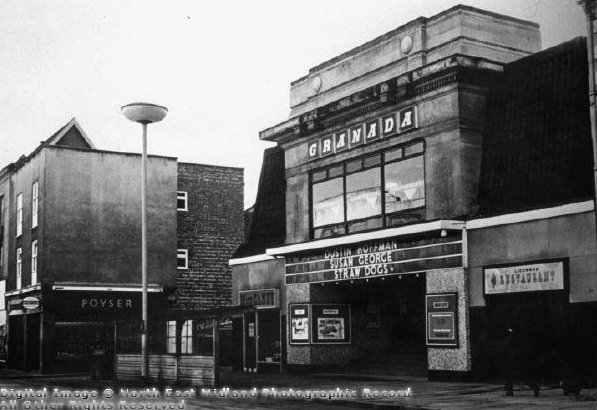
The exterior of the Granada in Mansfield - image courtesy of the North East Midland Photographic Record
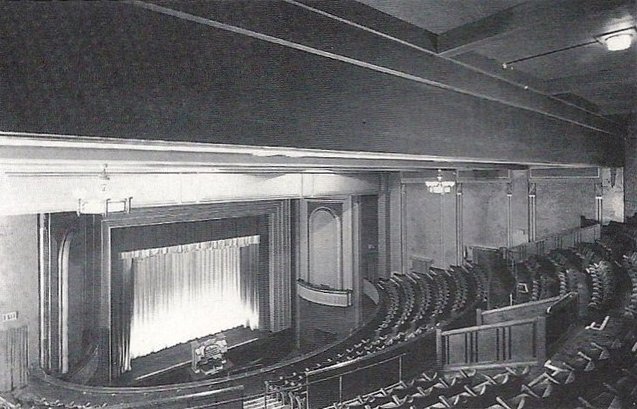
The interior of the Granada in Mansfield showing plush seating, a large screen and the latest in organs in the orchestra pit.
Ladbroke Film Centre – Derby (Demolished - 2 screens - 1540 seats)
(It opened as the Gloria Cinema on 21st November 1938 with George Formby in “I See Ice”.It was a modern Art Deco styled cinema, designed by architect Alfred J. Thraves of Nottingham. The main feature of the exterior was a slim 60 feet tall tower that had the cinemas name at the top. The entire building was outlined in neon strips which shone out at night. Inside the auditorium the decorative features were grilles and decorative plasterwork depicting shells, bullrushes and other plants in an Art Deco style. Lighting was via indirect troughs of hidden lighting across the ceiling. Due to lack of maintenance over the years the slender fin tower on the front exterior had to be shortened as pieces of brickwork were beginning to fall off. The circle area was divided off into two mini-cinemas seating 144 and 138 and re-opened as the Ladbroke Film Centre on 6th December 1974.They closed on 31st December 1982 with Cloris Leachman in “Herbie Goes Bananas” and Michael Crawford in “Condorman”. Bingo continued in the former stalls area, operating as a Top Rank Bingo Club until the mid 1990’s. The building was then closed and demolished.)
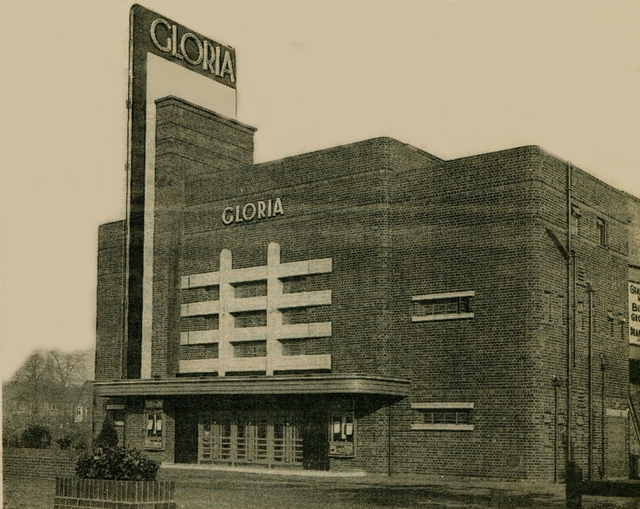
The original Gloria Cinema prior to being re-named
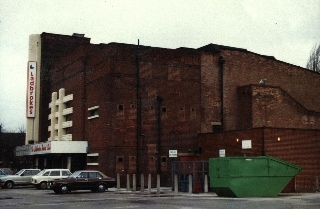
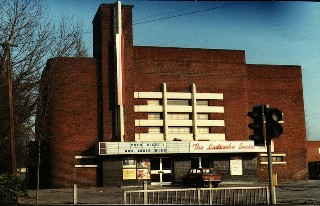
Views of the former cinema in 1982 and 1983
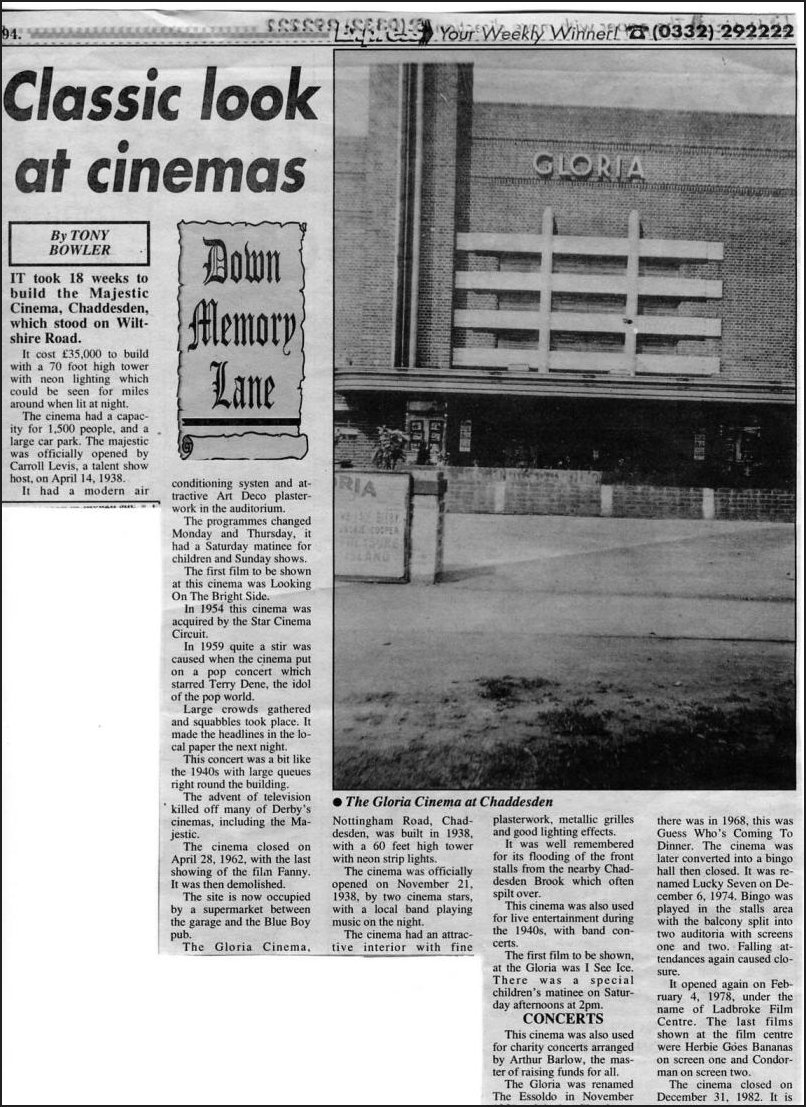
Majestic Theatre – Retford (1 screen 650 seats)
Opened in October 1927 with a stage production of the musical “No, No Nanette”. The Majestic Theatre was built for both cinema & theatre use. It has seen hard times, but survives today as one of the finest examples of a small town cine-variety theatre in the UK. It was designed by Alfred J. Thraves and seated 1,200 in 1943, on two levels (stalls and circle) plus six boxes, three on each sidewall. Richly detailed plasterwork abounds around the almost square proscenium arch, the boxes, sidewalls, and the magnificent barrel vaulted ceiling. Now a Grade II listed building.
Designed from the outset as a cine-variety venue, the Majestic was the work of Alfred Thraves, who designed the 1,200 seater for a local cinema operator, Cyril Getliffe. In the late 60s, it was converted to cine-bingo. It lay dark for a spell in the 80s, until re-opening in 1986 - it was then subdivided with a small second screen under the balcony., but this lasted only until 1992. A year later, it was bought by a trust, staffed by volunteers, who have slowly and painstakingly been restoring the building, which is back to its original single-volume space. Of particular note are the topless mermaids supporting the barrel-vaulted ceiling! The theatre is now a Grade II listed building.
Odeon – Nottingham (Demolished - 6 screens – 2426 seats)
Built for and originally operated by the County Cinemas chain, this opened as the Ritz Cinema. Local architect Albert J. Thraves was also brought in by the main architects Verity & Beverley. The Odeon 1-6 closed on 26th January 2001 and stood unused until September 2012, when demolition commenced.
Parade Cinema – Skegness (Closed – 1 screen – 1600 seats)
The Parade Cinema was opened on 12th December 1933 with Maureen O'Sullivan in “The Cohens and Kellys in Trouble” and “Big Game”, plus “Universal News”. Seating was provided in stalls and circle levels. The proscenium was 42 feet wide. The Parade Cinema was closed on 30th September 1935 and didn’t reopen until 9th April 1936. The management stated that from then on, the cinema would be closed during the winter months. During World War II, from 1941, the cinema returned to full time opening. The building was converted into a Penny Arcade amusements, and later the Plaza amusement arcade. Over the years it has been altered beyond recognition from its cinema days.
Tudor Cinema - West Kirby (Closed – 1 screen – 1,000 seats)
The Tudor Cinema in West Kirby was situated on the corner of Grange Road, Bridge Road and Riversdale. It was built on the site of the Queens Cinema, which was destroyed by fire in February 1932. The Queens had been the public Hall, built in 1897. The stage area and side walls of the Queens Cinema were retained in the new building. The first film to be projected at the Tudor Cinema was Sydney Howard in “Night of the Garter” on 4th December 1933. The final screening was on 30 January 1965 with the showing of Kim Stanley in “Seance on a Wet Afternoon”. It became a bingo club, a restaurant, then a shopping arcade. It now still stands in use as offices
Cinema locations and their current status information sourced from Cinema Treasures
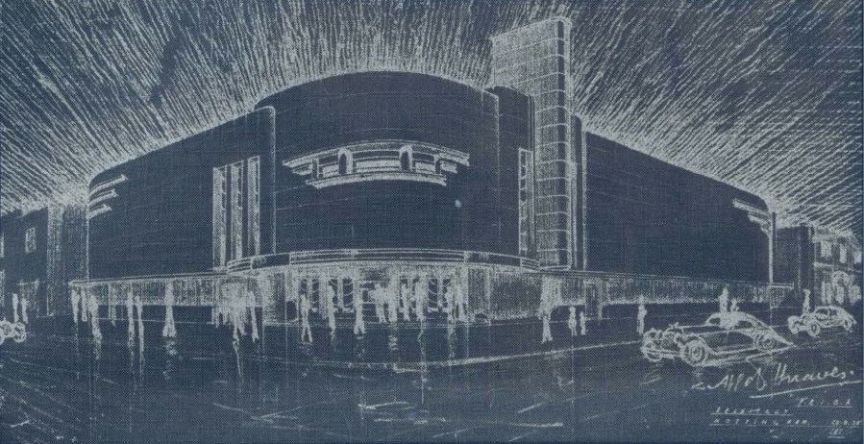
The Byron in Advertising
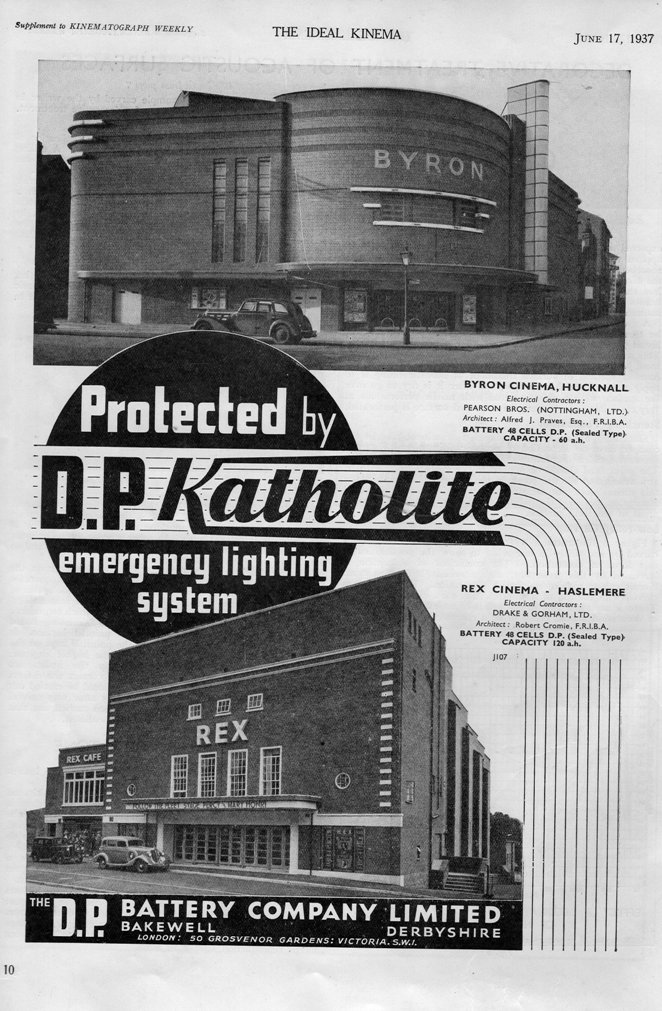
From 'The Ideal Kinema' (supplement to Kinematograph Weekly) dated June 17th 1937 advertising the D.P. Katholite Emergency Lighting System as used at The Byron (Hucknall) and Rex (Haslemere) Cinemas. It is interesting to note that for such a large advert - the name of the Byron's architect, Alfred J Thraves has been misspelled as Alfred J Praves! With grateful thanks to the Cinema Theatre Association for the use of this image.
The Byron in Books
Lord Byron, the poet - you would of course expect to find him in books - but this book, not unlike the irreverent 'Byron's Mine' film starring 'loveable' Leslie Phillips this book highlights the same feature as the film. From the Daily Mail :
Here lies Lord Byron and his, ahem, enormous talent...
"FINDING THE PLOT: 100 Graves to visit before you die" by Ann Treneman
By John Preston PUBLISHED: 18:32, 7 November 2013 | UPDATED: 10:51, 8 November 2013 - Daily Mail
Should you need proof of what a confused attitude we have towards death, just consider the case of Spike Milligan’s headstone. When he died in 2002, Milligan left instructions that the wording on his headstone should read, ‘I Told You I Was Ill’ - subsequently, this was voted the nation’s favourite epitaph.
However, anyone visiting Milligan’s grave in Winchelsea, East Sussex, is likely to be disappointed. Church authorities objected to the inscription, so a ludicrous compromise was reached whereby it was translated into Gaelic - rendering it safely incomprehensible to all save a tiny few.
But as Ann Treneman proves in this delightful as well as weirdly uplifting book, it’s quite possible to be funny about death without tipping too far into flippancy.
Before Treneman set off to find her 100 favourite graves she set herself a few ground rules. She would try to make her selection as varied as possible, she would concentrate on the long-dead rather than the recently deceased and she’d also steer well clear of murder victims.
Strictly speaking, some of her choices aren’t really graves at all. She kicks off with the philosopher, Jeremy Bentham, who left instructions that he should be stuffed after he died in 1832. He now resides in a cupboard at University College, London - or at least part of him does.
Attempts to mummify Bentham’s head using an air pump and sulphuric acid, didn’t work out too well, so it was decided to give him a wax head topped off with his own hair.
Nor is Postman’s Park in the City of London a grave, but it’s still one of the most poignant places I’ve ever been to.
The Victorian painter G.F. Watts - he was also President of the Anti-Tight Lacing Society - came up with the idea for a memorial to forgotten heroes. Among the many selfless sacrifices commemorated is that of Sarah Smith, a ‘pantomime artiste’, whose skirt went up in flames as she tried to save a friend who had caught fire.
While some of her favourite graves are familiar enough, Treneman always manages to come up with a telling detail, some little spark that sheds unexpected light on her subjects. Thus we learn that only 12 people came to Charles Dickens’s funeral in 1870. Mind you, that’s better than Karl Marx, who attracted just nine mourners to his in 1883, while the poet Sylvia Plath could only manage eight when she died in 1963.
Death, of course, is the ultimate leveller and you often find some extremely strange bedfellows in graveyards, slumbering together through eternity.
A few yards away from Karl Marx’s grave lies Richard ‘Stoney’ Smith, inventor of the ultra-wheatgerm loaf.
Smith marketed his invention under the heroically unappealing name of Smith’s Patent Germ Bread. Then, in 1890, he launched a nationwide competition to find something more catchy. It was won by a man with the equally off-putting name of Herbert Grime, whose entry was a shortened version of the Latin phrase hominus vis - ‘the strength of a man’. And so Hovis was born.
In Kilmuir cemetery on the Isle of Skye, Treneman finds the grave of Flora MacDonald, who ferried Bonnie Prince Charlie to safety during the Jacobite Risings.
Also there is the fashion designer, Alexander McQueen, who took his own life in 2010 (He was proud of his Scottish roots). Nor is death any respecter of people’s reputations.
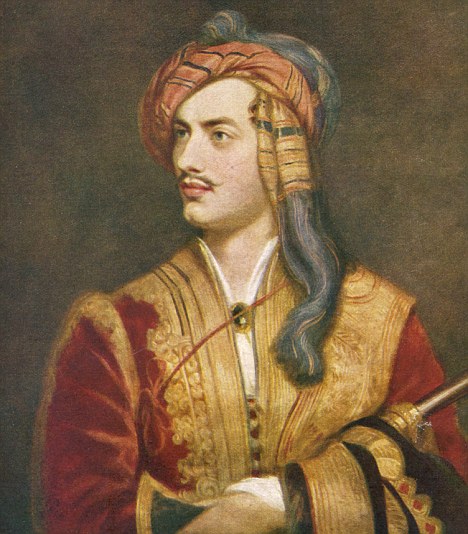
Lord Byron - exhumed in 1938
When the poet Lord Byron died in 1824, there was mass hysteria at his graveside in Hucknall churchyard in Nottinghamshire. Now he lies surrounded by empty beer cans in the shadow of the Byron Bingo Hall. He hasn’t exactly had an untroubled sleep there either. In 1938 the vicar of Hucknall, worried by persistent rumours that the grave was empty, gained permission to open it.
Inside he found Byron’s perfectly embalmed body. Before replacing the lid, the vicar noted diligently that the ‘sexual organ showed quite abnormal development’.
Only one more of Treneman’s choices died recently, and that’s the political strategist, Philip Gould - Baron Gould of Brookwood. One of the key tacticians behind Tony Blair’s election victories, Gould died in 2011 shortly after completing a remarkable memoir in which he wrote about his impending death. He also had himself photographed beside his grave in Highgate Cemetery.
‘This morning I stood at my grave,’ Gould wrote, ‘and I thought: God, I do feel very happy to be going to this place.’ Then he added: ‘That is a small victory for a different view of death.’ So too, in its own quirky way, is this book.

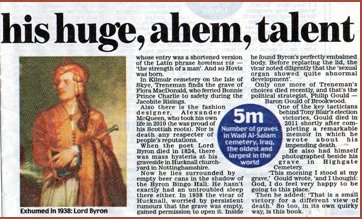
The Car outside the Byron Cinema
 Recently original images of the Byron came into my possession thanks to the Cinema Theatre Association Archive (who also have a fabulous logo - see left). My interest was peaked on seeing a car parked outside the cinema. The magazine it appeared in was dated 1937 and so I hoped it might be reasonably easy to identify. I will start by saying the that I narrowed the search down to four contenders after looking at images on the internet. They were Daimler, Crossley, Austin and Wolseley even though I could see that the vents on the four examples I was looking at did not really match those on the mystery car. I'm pleased to say I wasn't the only one fooled until rescue came in the form of Roger, webmaster of The International Alliance of Morris Owners (IAMO) and Simon of Simon Cars who as an expert of the Riley and Wolseley confirmed emphatically that the picture was not that of a Wolseley. With two such knowledgeable sources confirming that the car in the picture was a Morris and a third who had seen my enquiry on The Byron Project Fb page it seemed to me pretty much that identification had been made. However, the first identification came from an American friend of mine, Jack Nunes, whom I met through our joint interest in the 'Cat Who' books and his kindness to animals.
Recently original images of the Byron came into my possession thanks to the Cinema Theatre Association Archive (who also have a fabulous logo - see left). My interest was peaked on seeing a car parked outside the cinema. The magazine it appeared in was dated 1937 and so I hoped it might be reasonably easy to identify. I will start by saying the that I narrowed the search down to four contenders after looking at images on the internet. They were Daimler, Crossley, Austin and Wolseley even though I could see that the vents on the four examples I was looking at did not really match those on the mystery car. I'm pleased to say I wasn't the only one fooled until rescue came in the form of Roger, webmaster of The International Alliance of Morris Owners (IAMO) and Simon of Simon Cars who as an expert of the Riley and Wolseley confirmed emphatically that the picture was not that of a Wolseley. With two such knowledgeable sources confirming that the car in the picture was a Morris and a third who had seen my enquiry on The Byron Project Fb page it seemed to me pretty much that identification had been made. However, the first identification came from an American friend of mine, Jack Nunes, whom I met through our joint interest in the 'Cat Who' books and his kindness to animals.
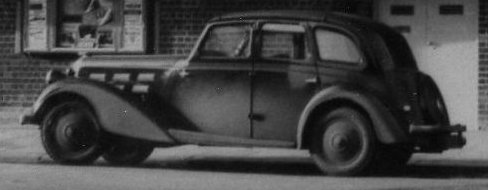
The Mystery Car (enlarged detail)
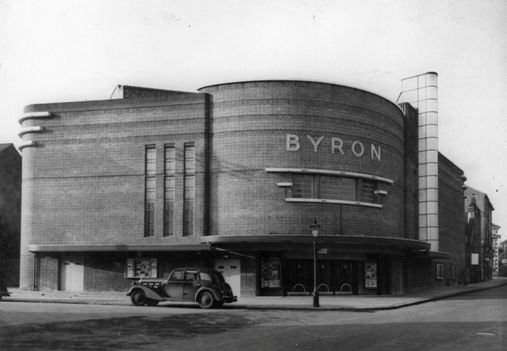
The Byron Cinema - 1937 (image courtesy of of the CTA)
Some fun following on from the identification of the car
Most images with grateful thanks from Roger at IAMO
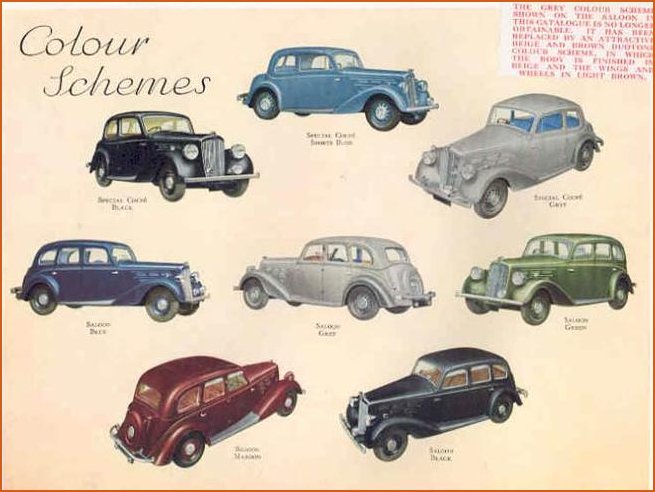
Happily Morris did not subscribe to the famous diktat attributed to Ford of 'You can have any colour so long as it's black'
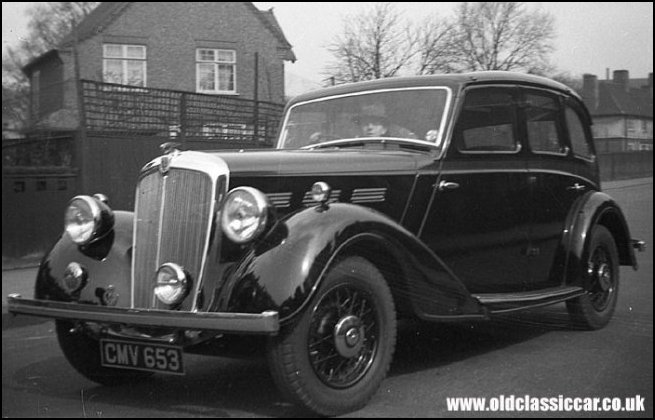
What looks like an authentic photograph of the Morris in the 1930s courtesy of Old Classic Car

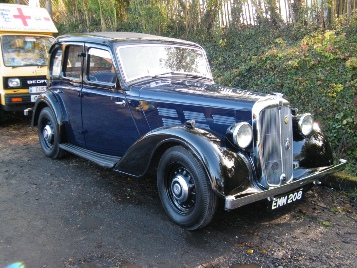
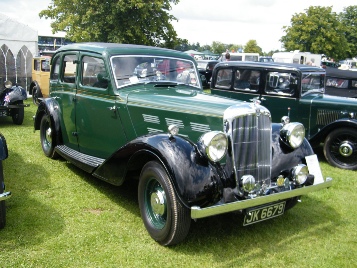

4 of the colours found!
Two-toned version on the cover of the 'Practical Motorist'
A selection of adverts for the Morris series all of which resemble the mystery car
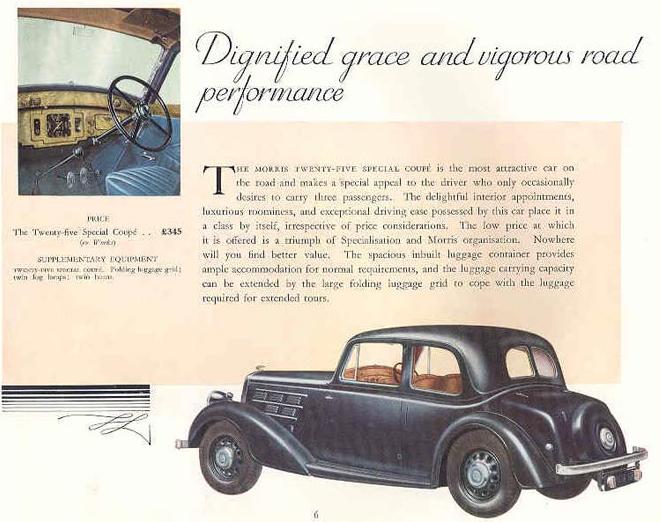
Extolling the virtues of the Morris
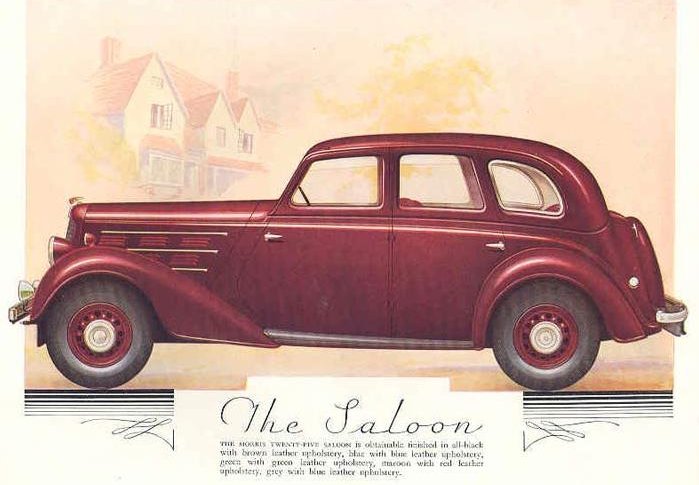
I like this one in particular as it reminds me of the plush red seating at the Byron
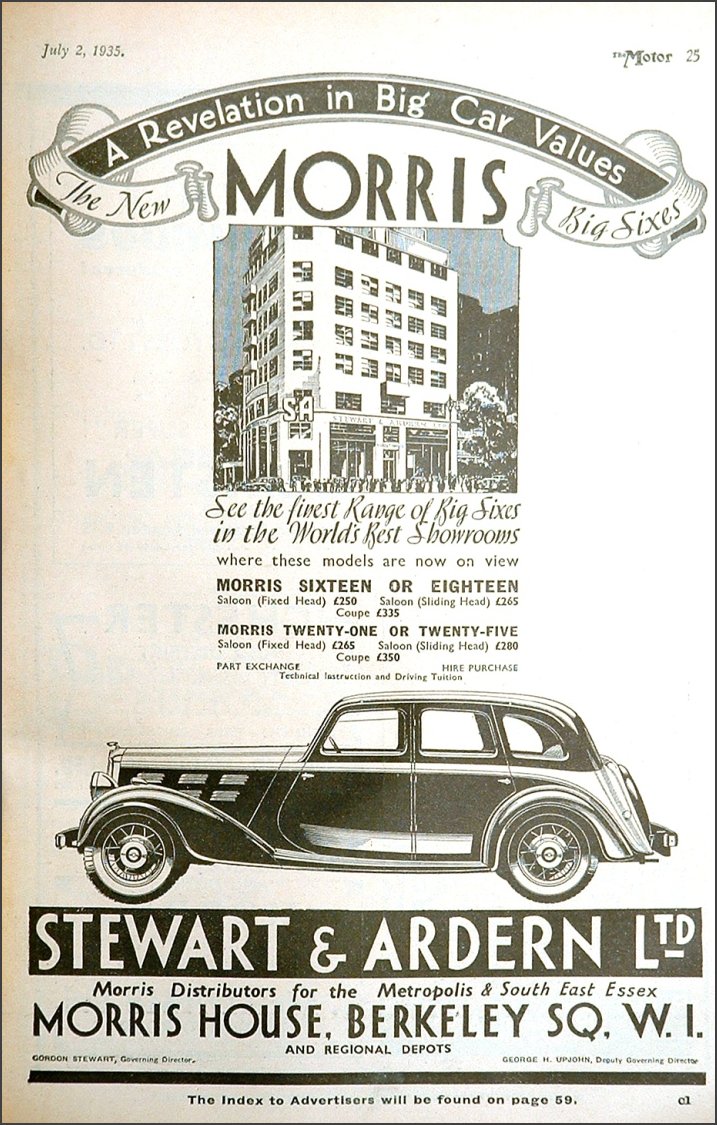
The Morris Range as advertised by motor distributors


Promoting the Morris 25 as the perfect family car
More Morris Ads can be found here
Haven't we seen this somewhere before?
I seem to have a bit of a knack in finding 'lookalikes' - whether people (see the tennis section) or building (see the Midland and Ocean Hotels) - this time I've found a Byron lookalike in the form of the Wieboldt Building, Oak Park, Illinois. Unhappily this building was demolished in 1993.
There is also very little architectural information as far as I can see although the superstores are mentioned in articles on 'Department store' architecture.
A snippet of information about the architects (like many enormous corporations they will have had their own in-house architects) courtesy of and thanks to 20th Century Decorative Art Fb page
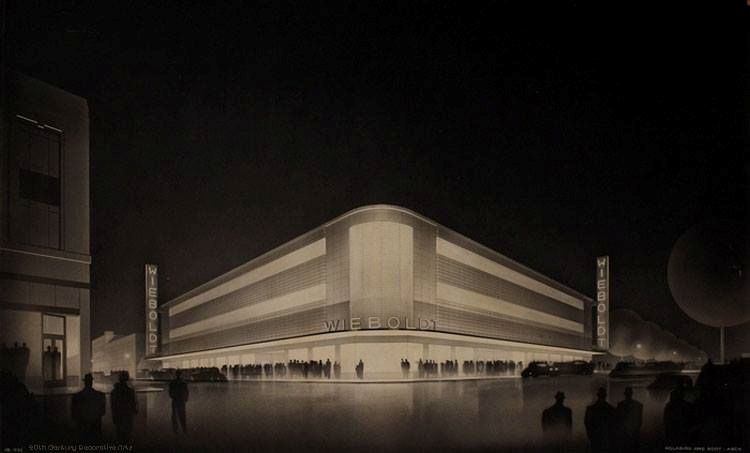
A 'mixed media on board' department store design by Holabird and Root Architects for the Wieboldt Building in Oak Park, Illinois - the design is dated 'circa 1936'
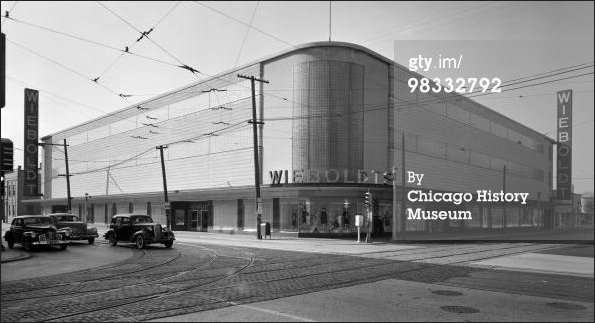
Getty images kindly provide an actual image of the Wieboldt around the time of its opening - I won't attempt to identify the cars in this image!
Although an advert for the store itself and not a specific product as in the case of the Byron - this style echoes the D.P. Katholite style example shown earlier on this page.
An interesting fact : R.C. Wieboldt's Construction Company built all of the stores of the Wieboldt's department store chain. These stores were the targets of a Baggage, Parcel, Theatrical, and Armored Car Drivers' and Helpers' Union (AFL) strike in 1939; an early example of union busting through subcontracting.
"Luminous glass blocks and MAZDA lamps are effectively used as part of the architectural element in the new Wieboldt store in Oak Park, Illinois"
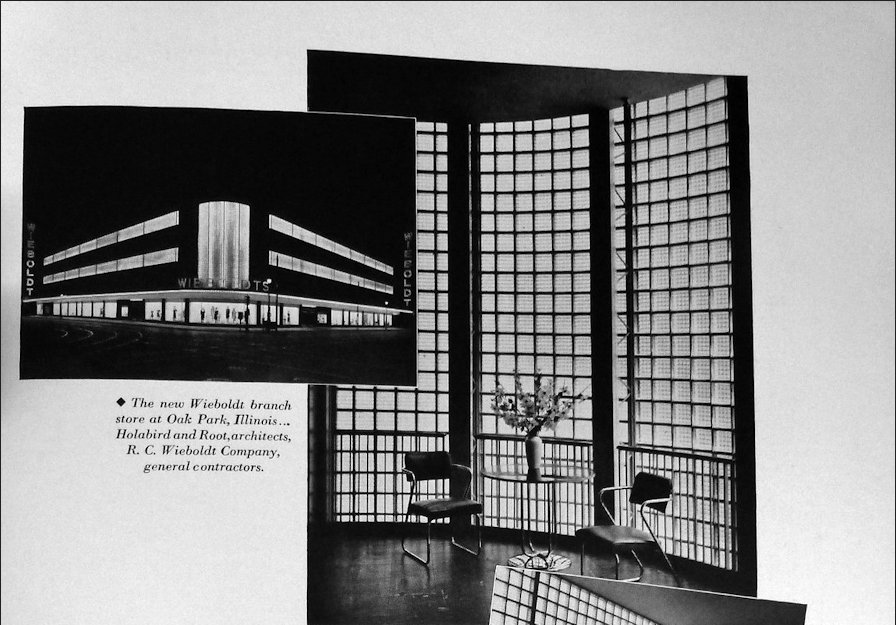
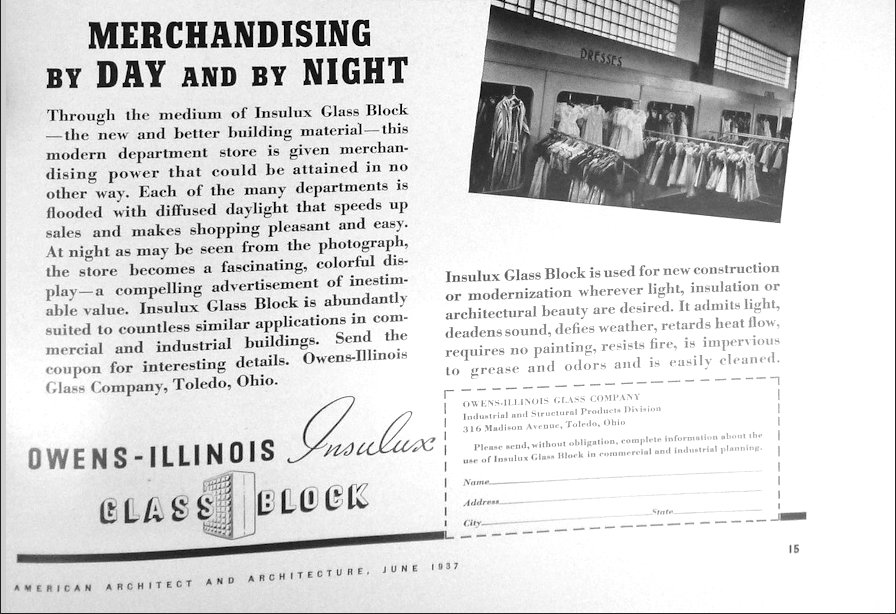
Source: American Architect and Architecture, June 1937
The Hucknall Dispatch, dated 29th October 1936 carried an article describing the events of the opening week :

Page refreshed : 16th June 2020 (G)